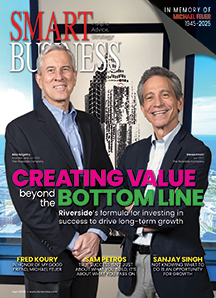Build leadership-level buy-in
Once you’ve built some credibility with employees, it’s time to change your focus to collaborating on a vision. Rubino started with her thoughts and then involved her leaders in stages.
“I crafted what I thought were the key priorities for the organization and ran that by the (senior leadership team),” Rubino says. “So I said, ‘It’s ’08; by the end of ’09, we’ll have created this culture of accountability, which means we are using data-based decision-making, we have engaged employees, and by doing this — and I’m paraphrasing — we’re going to have repeatable, sustainable performance and that means top-line growth and bottom-line growth.’”
Rubino let her senior leadership team massage her original thoughts and then let that version take alterations at the director level. The core things Rubino wanted — accountability, data-based decision-making and the like — had to remain intact, but she wanted thoughts on everything from time frames to the necessary personnel.
Once everyone had a look, Rubino blew up a big copy of it and sat down with all those involved. She hung the document on the wall of the meeting room.
“It’s sort of like the Declaration of Independence,” she said. “We put it up on a big board, and I said, ‘We started with some thoughts from me, you’ve all had input, if this is what we believe, throughout this meeting I want you to sign this. … And if you can’t sign today, I don’t want to strong arm you, but you have to come tell me why you can’t sign and if we have to do something different before you can sign.’”
There were 30 people in that meeting and more than 70 percent signed it that day.
Rubino was surprised by the two objections those leftover still had. First were minor alterations they simply hadn’t mentioned previously. Solving that was easy.
“I’d say ‘This is our Declaration of Independence, so we’ll add it,” Rubino says.
The second had nothing to do with the vision.
“The people that came to see me were the people who had been in the company the longest,” she says. “They would say, ‘We’ve seen people come and go, you’re probably going to go, too, and this agenda is not going to matter.’ And I said, ‘I hate to tell you, but I’m not going anywhere. I’ve only had four jobs in 30 years; I intend to stay.’ It was more older folks, skeptical, they didn’t think that the corporate entity would support us. … There was not a lot of course correction to the statement of vision but just hearing them out.”
A few final dissenters still didn’t sign after those private meetings, so Rubino put the declaration on the outside of her door and had her assistant keep a casual eye on it. Days later, all the names were inked. Rubino says her takeaway lesson was sometimes people put up an objection just to be heard individually. The solution is patience and a format for them to be heard.
“Eventually, we got everybody to sign,” she says. “You’ve got to put a framework in place and people have to feel that they’re giving input to that.”

